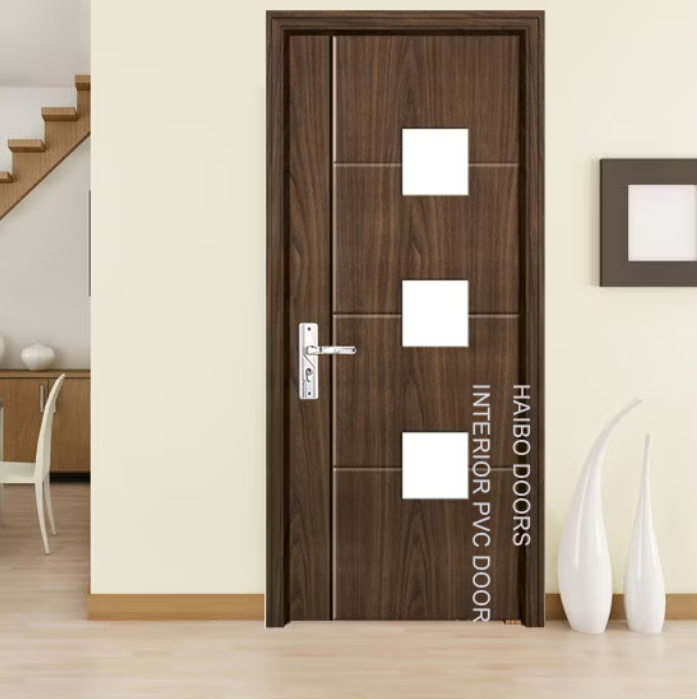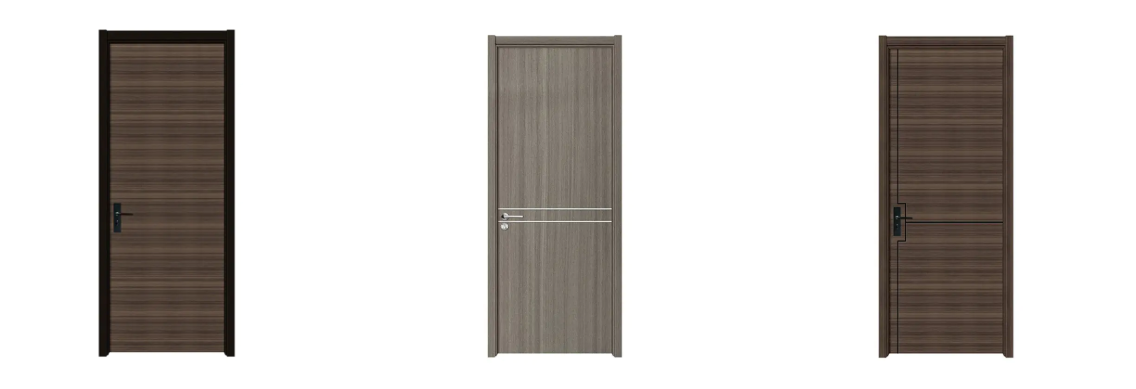Doors are more than just an entrance; they also provide comfort, design, and security. Choosing the right door starts with understanding the manufacturing process. For many homeowners and designers, a reliable PVC Door Factory is the starting point for beauty and durability.
1. Understanding the Purpose of the Door
Before choosing a PVC door, it's important to consider its purpose and where it will be used. Bathroom doors need to be moisture-resistant and easy to clean. In contrast, living room doors are more about style, soundproofing, and aesthetics. Entry doors need to prioritize security and weather resistance, while interior partitions prefer lightweight, sleek shapes.
Understanding the door’s intended function can narrow down your choices in terms of construction, thickness, doorframe type, and finish. For example, a PVC sliding door may be appropriate for a kitchen pantry, but it’s not ideal for a main entry, where swivel functionality and lock integration are critical.

2. Evaluating Durability and Material Composition
PVC doors vary greatly in performance based on their core materials and surface treatments. Some use solid PVC core, while others integrate WPC cores for better impact resistance. Coatings may include laminated woodgrain films, UV-protective layers, or matte-texture surfaces.
Material Comparison Table:
| Core Type | Water Resistance | Impact Strength | Common Use |
|---|---|---|---|
| Solid PVC Core | Excellent | Moderate | Bathrooms, Laundry Rooms |
| WPC Core | Good | High | Bedrooms, Offices |
| Hollow PVC (Honeycomb) | Moderate | Low | Wardrobes, Light Interior |
Durability also depends on door thickness, which typically ranges from 28mm to 40mm. Thicker doors generally offer better sound insulation and long-term resistance to bending or warping.
3. Aesthetic Choices: Color, Texture, and Pattern
Today’s PVC doors are no longer basic white slabs. Advanced manufacturing techniques allow PVC Door Factories to produce doors in a broad spectrum of colors and textures—wood-like grains, high-gloss surfaces, pastel tones, and even metallic finishes.
You can choose from:
-
Smooth satin for minimalist interiors
-
Woodgrain finishes for a classic or rustic look
-
High-gloss lacquer for a modern touch
Texture also impacts how the door interacts with lighting and room ambiance. A textured finish might be more forgiving to fingerprints and scratches, making it suitable for high-traffic areas.
4. Customization and Sizing Options
In today's competitive market, the ability to customize is not just a premium feature—it’s an essential expectation. A PVC Door Factory that values both performance and aesthetics will prioritize offering a wide range of customization options to meet the diverse requirements of architects, builders, and homeowners. This flexibility is especially important in renovation projects, where existing frame sizes may not align with standard dimensions, or in custom-designed spaces where visual cohesion and practicality must go hand in hand.

Rather than limiting customers to fixed templates, reputable factories provide options that let users personalize various aspects of the door to match functional needs and interior styles. From overall dimensions to panel configurations and frame profiles, these factories empower clients to shape their door solutions without compromise.
Customers can tailor several aspects of the door, including:
-
Door size: Whether for standard 700mm widths or custom double-door setups
-
Panel structure: With or without glass inserts, horizontal or vertical slats
-
Frame style: Rounded, square-edged, or grooved trims
-
Opening mechanism: Hinged swing doors or space-saving sliding systems
These choices are crucial when replacing old doors in unique frames or when designing new builds that require seamless integration with walls, floors, or furniture.
5. Safety and Environmental Considerations
PVC doors are commonly manufactured with fire-retardant additives and anti-toxic stabilizers. Especially in residential and public buildings, choosing lead-free and formaldehyde-free doors helps protect indoor air quality.
Furthermore, PVC Door Factory adopts eco-conscious practices by recycling material waste and using energy-efficient extrusion lines. In educational settings or childcare environments, rounded corners and soft-close hinges can also be part of the safety customization.
Environmental Compliance:
| Feature | Description |
|---|---|
| Lead-Free PVC Resin | Reduces toxic emissions |
| Recyclable Material | Supports circular economy |
| Energy-Efficient Production | Lower carbon footprint |
| Fire-Retardant Additives | Improves safety in public buildings |
6. Budget and Long-Term Value
While budget is always a consideration, the cheap door is rarely cost-effective. Low-quality PVC may discolor or warp over time, requiring earlier replacement. On the other hand, a well-manufactured door provides years of service with minimal maintenance.
Buyers should weigh up:
-
Initial cost vs. long-term performance
-
Warranty period offered by the manufacturer
-
Maintenance needs, such as cleaning and periodic hardware checks
Investing in a quality door from a trusted PVC Door Factory ensures that your project stays within budget without compromising safety or style.
7. Color Selection and Matching Your Interiors
Once size and structure are settled, color becomes the next essential step in creating a door that truly fits your space. A quality PVC Door Factory understands that interior design is not just about function—it’s about harmony. That’s why they offer a rich palette of colors and finishes to match different décor styles, whether you’re working with minimalist whites, cozy earth tones, or bold contemporary contrasts.
Modern PVC doors are available in a wide range of shades, from classic neutrals like white, beige, and grey, to woodgrain finishes that mimic oak, walnut, or cherry. Some factories even allow for dual-color options—one for the interior face and one for the exterior—ideal for spaces where rooms have distinct design themes.
Coordinating doors with interior elements (flooring, wall color, furniture tones) helps create visual unity. It also adds value and style to residential and commercial spaces. In projects involving multiple rooms or spaces, choosing a unified or coordinated door color not only creates a harmonious aesthetic, but also expresses your personality.
"When personalization extends to color, the result is not just a functional door, but a design statement."
So Do You know How to Choose a PVC Door now?
Choosing the right PVC door is more than just selecting the right door. It also requires considering the material's durability, insulation, and ease of maintenance, and making sure it complements your lifestyle and interior design. Features like the right size, customizable configurations, and carefully selected colors can transform a simple door into a major highlight of your space.
A reliable PVC Door Factory doesn’t just manufacture products—they help shape better living environments. That’s why many homeowners and developers turn to Zhejiang Haibo Door Co., Ltd. a company known for offering versatile, well-crafted PVC door solutions tailored to modern needs. Whether you're replacing old frames or outfitting a new build, partnering with a trusted supplier ensures every detail works in harmony with your space.

 English
English русский
русский Français
Français Español
Español bahasa Indonesia
bahasa Indonesia عربى
عربى



